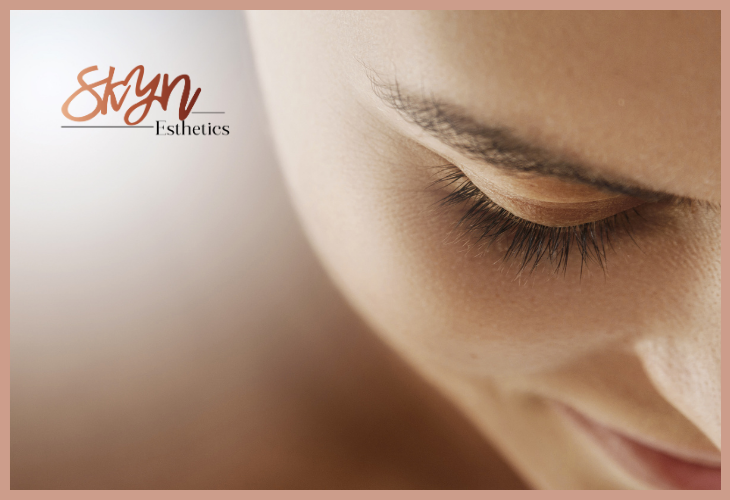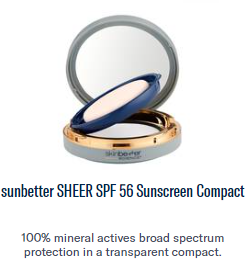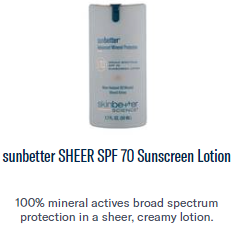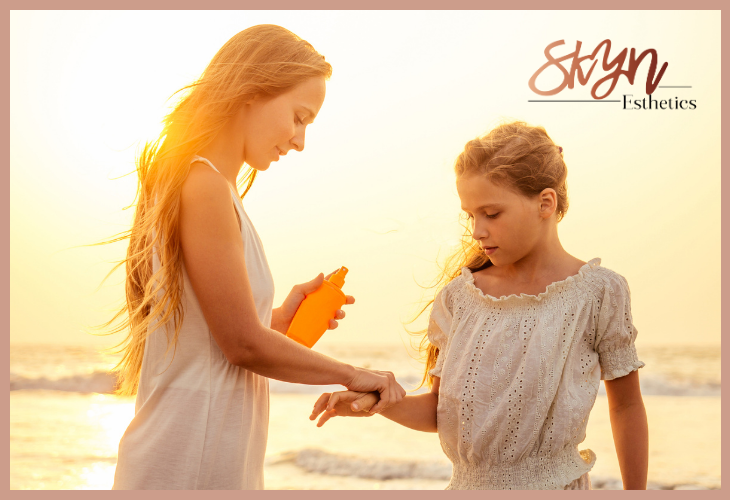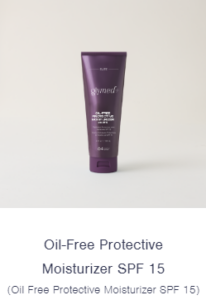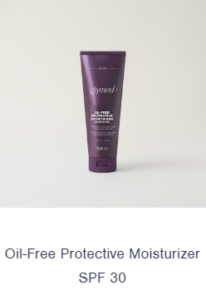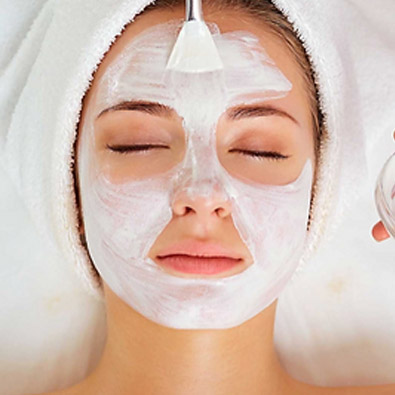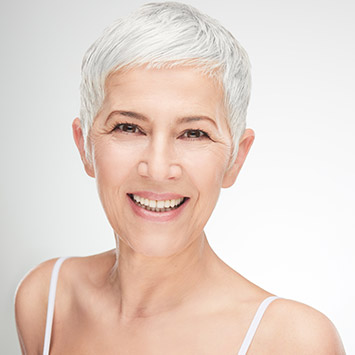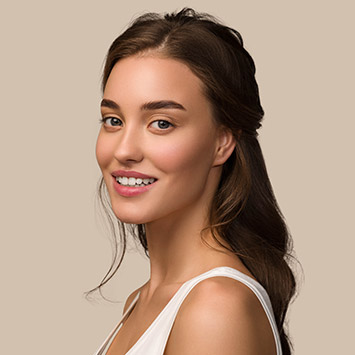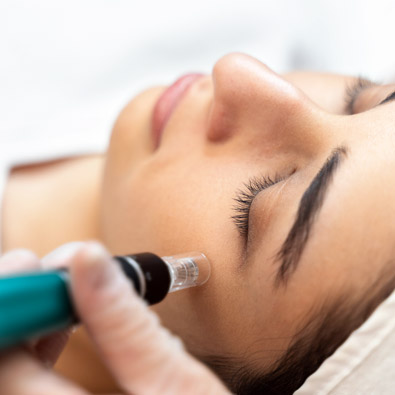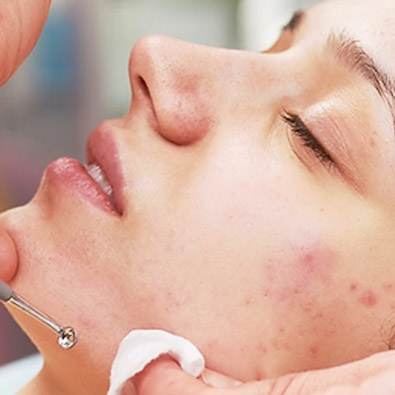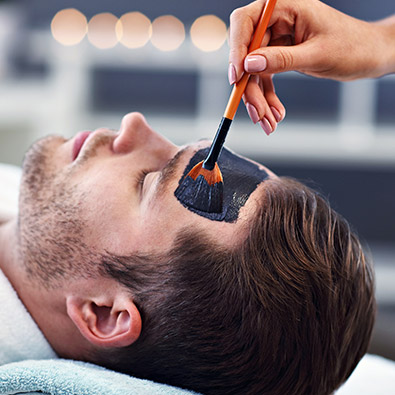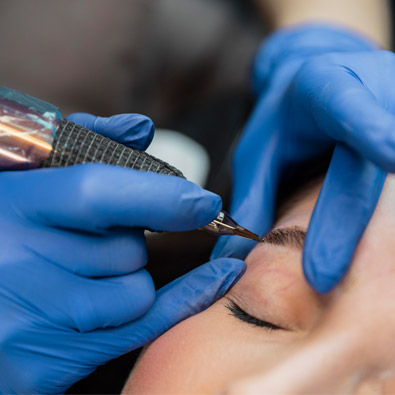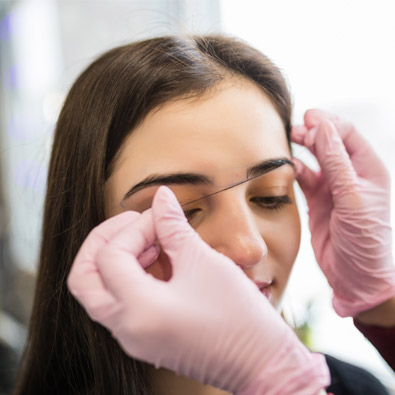Sunshine is a mood-booster, but did you know you need sun protection every day, not just for outdoor adventures? As skin experts, we see the long-term effects of sun exposure in Florida — and it’s not pretty. As Erin Blaser, owner of Skyn Esthetics always says, “Wearing sunscreen daily is one of the simplest and most crucial steps you can take to protect your skin. It helps prevent sunburn, reduces the risk of skin cancer, and slows down the signs of aging. Just a few seconds each morning can make a significant difference in your skin’s health.”
Read more and learn to protect your skin from everyday sun exposure.
You probably know sunscreen helps reduce your risk of skin cancer and prevents pesky wrinkles, dark spots, and other signs of premature aging.
The US Food and Drug Administration (FDA) and many dermatologists say that lathering up before spending time outdoors is a must.
“Sunscreen is one of the major components of sun protection,” Noelani González, MD, a board-certified dermatologist at Mount Sinai West in New York, told Health. Yet even people who slather it on religiously may not know the best practices for sunscreen. These 15 tips will help you truly protect yourself from UV rays.
Apply Sunscreen Before Going Outside
Don’t wait until you get to your destination to apply sunscreen. Instead, use it at home so the product’s fully effective before you get out in the sun.
“You actually want to apply your sunscreen 30 minutes prior to exposure,” explained Jeannette Graf, MD, assistant clinical professor of dermatology at Mount Sinai Medical Center in New York. That way, it has time to get absorbed and start working—so you don’t get UV exposure when your skin is vulnerable.
Apply Sunscreen Before Getting Dressed
It’s best to apply sunscreen when you’re entirely undressed and can apply it thoroughly.
The Skin Cancer Foundation. All About Sunscreen.
Otherwise, “if you already have a swimsuit or clothing on, you’re likely to apply it gingerly, so you don’t get it on your clothes, which makes you likely to miss a spot or not apply liberally enough,” said Noelle Sherber, MD, a dermatologist in private practice and clinical associate professor of dermatology at George Washington University.
Apply sunscreen in front of a full-length mirror, said Dr. Sherber, which “helps ensure you entirely cover tricky spots like the mid-back and backs of the legs.”
Protect Your Lips
Dr. Graf said that just like the rest of your skin, lips are vulnerable to UV rays, so it’s essential to use sunscreen on your mouth.
But don’t use the same stuff you use on the rest of your body—it tastes weird and won’t last that long on your lips anyway. Try a lip balm with SPF, which is thicker, so it stays on longer.
“Then reapply even more frequently than you do body sunscreen since talking, eating, and drinking removes the sunscreen on your lips faster,” Dr. Graf explained.
Apply Sunscreen in Frequently Missed Spots
There are a lot of less-obvious areas people tend to forget to cover in sunscreen—and they’re just as essential to protect.
Dr. Graf said you should remember your:
- Toes
- Feet, including the bottoms
- Inner upper arms
- Underarms
- Back of the neck under the hairline
- Ears, especially the tops and back of your ears
- Eyelids
Put that sunscreen everywhere.
Choose Sunscreen Based On Your Activity
The small print on your sunscreen label matters, so make sure you’re choosing the right sunscreen for your activity, especially if that activity involves sweat, a pool, or the ocean.
“Make sure you get a water-resistant formulation for swimming or activities where you’ll perspire because non-water-resistant formulas can slide right off,” Dr. Sherber said. “Plus, they tend to migrate into eyes and sting, whereas water-resistant ones won’t.”
Use the Right Sunscreen for Your Face
There is a difference between face- and body-specific sunscreens.
“Facial skin is generally more sensitive to irritation than body skin, so face formulations have been tested to cause less irritation and not trigger acne,” Dr. Sherber said. “If you’re acne-prone or sensitive, avoid the body versions for your face, especially the dry-touch sprays—they’re full of alcohol, which is very drying and irritating for facial skin.”
Use Sunscreen on Cloudy Days
Dr. Graf said it might seem counterintuitive to slather on sunscreen on a gray or drizzly day, but you can get UV exposure without ever seeing the sun in the sky. Eighty percent of UV rays still come through on cloudy days, so don’t let the weather determine your sunscreen use—apply it daily.
Apply Enough Sunscreen
Dr. Graf said that the old rule about using a shot glass worth of sunscreen every time you apply still holds up. (That’s about an ounce.)
A nickel-size dollop is the right amount for your face. From the neck down, 2 mg of sunscreen per square centimeter of skin is necessary, equivalent to about 2 tablespoons.
But now that more people are opting for continuous spray formulas, it can be hard to tell if you’re getting enough coverage. To ensure you’re using sprays correctly, Dr. Graf suggested holding the can six inches from your skin and spraying nonstop until you can see the moisture covering the entire area.
“Then rub it in—yes, even if the bottle says you don’t have to—so you don’t miss spots,” Dr. Graf said. “And repeat the spray a second time.”
Use Sunscreen Everyday
Unless you spend your time in a windowless bunker, you’re not protected from UV rays when you’re inside.
“Driving can be a major source of incidental exposure,” Dr. Sherber said. “The windows and windshield block UVB rays so you don’t see a sunburn, but UVA seeps right in, and that’s the spectrum that causes most skin aging and skin cancer.”
Your best bet is to apply sunscreen every morning, then feel free to sit by a window or drive! At the very least, use a moisturizer with SPF (sun protection factor) if you don’t want to add another step to your daily routine.
Use a Broad-Spectrum Formula
It used to be that many sunscreens only blocked UVB rays, the high-energy kind responsible for sunburns.
But shielding against UVA rays is just as important, Dr. Graf said, because they “penetrate the skin more deeply, are constant throughout the year, and cause premature aging.”
To be fully covered, look for sunscreens labeled “broad spectrum,” which block UVA and UVB rays. These formulas are readily available nowadays.
Choose the Right SPF
The SPF measures how well the sunscreen blocks out UVB rays—which primarily cause sunburns. There’s a common misconception that the SPF tells you how much longer it would take to get a sunburn than if you went out in the sun with bare skin.
You might think it takes 15 times longer to burn with an SPF 15 sunscreen. That’s not true. Many factors come into play regarding how quickly you burn, including the time of day, how much sunscreen you have on, and your skin characteristics.
SPF is a relative measure of the amount of sunburn protection provided by sunscreens that allows you to compare the level of sunburn protection provided by different brands.8The Skin Cancer Foundation recommends using a broad-spectrum sunscreen with at least SPF 15, while the American Academy of Dermatology Association (AAD) recommends SPF 30 or higher.
But should you go higher? The AAD guidelines say they don’t provide much more protection—SPF 30 blocks 97% of rays, while SPF 50 blocks just 1% more. However, they do have some additional benefits.
“They absorb more free radical-producing energy, so I recommend them for the summer,” Dr. Graf said.
Graf’s caveat before you reach for the SPF 100: “The super-high SPFs can provide a false sense of security—like you’re protected for longer—but you need to reapply just as often as you would an SPF 30.”
Toss Old Sunscreen
If you’re using enough sunscreen when applying—that shot-glass worth or two coats of spray—then having bottles left over from years past shouldn’t be an issue.
But if you have a sunscreen bottle that’s been around for two years or more, Dr. Graf said to toss it since it can lose its effectiveness over time.
Shelf life is up to three years, depending on your chosen formula. Look at that date before you make your purchase, and continue to pay attention to it.
Sunscreens don’t always show obvious signs they are past their prime. And some don’t have expiration dates, so write the date you bought it on the bottle.
Elizabeth Hale, MD, clinical associate professor of dermatology at the New York University Langone Medical Center, also advised keeping track of where your bottle has been.
“Exposure to UV light and heat can degrade a product much faster. Avoid leaving a bottle in the car, direct sunlight, or even the bathroom, which tends to get humid,” Hale said.
Reapply Sunscreen Frequently
Reapplying sunscreen is just as important as putting it on in the first place because it doesn’t last all day. How often should you reapply?
It’s best to layer on more SPF every two hours. And if you’ve gone for a swim (even if your SPF is water-resistant) or have been sweating excessively, reapply immediately after those activities.
To be sure that you’re covered head to toe, dermatologists recommend applying sunscreen before you get dressed and then reapplying to all exposed skin.
Wear Sunscreen Even in the Shade
Seeking solace under a beach umbrella or an awning near the pool doesn’t mean you get adequate sun protection.
Sand and water reflect damaging rays, which means UV radiation still gets through when you’re under a beach umbrella, “so you still have to apply sunscreen if you’re sitting under cover,” Dr. Graf said.
A 2017 study found that 78% of participants who used an umbrella and no sunscreen got sunburned in one or more areas. And even if you don’t get sunburned, you still get UV exposure.
Protect Your Eyes
Sunglasses aren’t just a fashion statement—they’re critical to keeping your eyes safe from UV rays. Make sure your sunglasses offer UV protection because some inexpensive styles don’t have the protective coating.
“Without it, the dark lenses actually allow your pupils to dilate, allowing even more UV rays in, which can play a big role in cataract development,” Dr. Sherber said. According to a 2021 study, people who didn’t wear sunglasses had a 57% higher incidence of cataracts.
Finally, a healthy reason to buy a pair of lovely shades!
Let’s keep your skin looking its best, every day! Experience the difference a personalized approach to healthy skin can make! We have many tools to help your skin recover from sun damage — and prevent new damage from occurring. For example, we have the Aerolase® Neo-Elite that covers all skin tones and has zero downtime. Schedule an appointment today at 561-602-3383 and let’s determine the best tools for your healthiest, most beautiful skin. For more tips, specials, and new products, find us on Instagram.
Reference: [https://www.health.com/beauty/15-biggest-sunscreen-mistakes]
